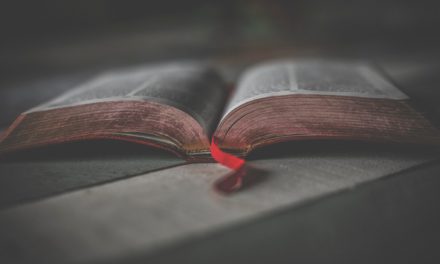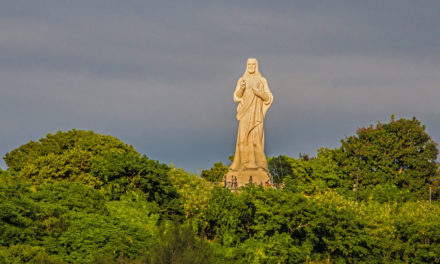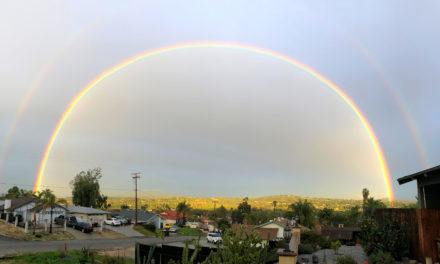Once, when he was in one of the cities, there was a man covered with leprosy. When he saw Jesus, he bowed with his face to the ground and begged him, “Lord, if you choose, you can make me clean.” Then Jesus stretched out his hand, touched him, and said, “I do choose. Be made clean.” Immediately the leprosy left him. And he ordered him to tell no one. “Go,” he said, “and show yourself to the priest, and, as Moses commanded, make an offering for your cleansing, for a testimony to them.” But now more than ever the word about Jesus spread abroad; many crowds would gather to hear him and to be cured of their diseases. But he would withdraw to deserted places and pray.
~ Luke 5:12-16
Exegetical Reflection
Luke adopted this story and its essential details from Mark. A man with a skin disease encounters Jesus, falls before him, and declares that, if Jesus wishes, he can make him “clean.” Jesus responds by touching him, expressing his desire, and declaring him “clean.” The man was immediately healed. Strangely, he does not ask to be healed. Clearly, this is more than a healing story. It is about cleansing from cultic defilement. According to Mosaic Law, persons diagnosed by a priest as having such a skin disease were declared to be “unclean” and must self-quarantine and be periodically examined by the priest until he alone declared them “clean.” Therefore, Jesus sends the man to the priest to verify his cleansed condition, to make the prescribed offering, and to reassure the community. Finally, Jesus orders him to be quiet about all this, but he doesn’t comply.
However, Luke made some notable changes to Mark’s story. Whereas Mark focuses on the man—derogatorily calling him a “leper,” Luke, less pejoratively, highlights the disease and its extent, referring to a man covered with leprosy. He characteristically has the man address Jesus as “Lord.” He drops Mark’s statement that after healing, the man became “clean.” He sensitively removes Mark’s reference to a stern warning and only indirectly reflects the words of Jesus’ order of silence. Luke softens Mark’s blaming the man by merely concluding that Jesus’ fame spread, as he prayed remotely.
—Warren Trenchard
Descriptive-Theological Reflections
The peculiar nature of our time is the way in which social justice and personal holiness are inseparably intertwined. With our personal behavior, we cannot escape making a social statement or having a global footprint. If there ever was a time when a person could separate personal holiness from social justice, that time is now gone. What is at issue today is how we choose to connect the two. Will we connect personal holiness and social justice through our intentional, strategically-planned action or will we choose to act haphazardly by living the disconnected life of “fire, aim, ready”? Social activism and spiritual retreatism/quietism are joined today in a common symbol.
The choice makers have chosen as their symbol “the mask.” The “cleansing” or “healing” rituals that satisfy our community needs for addressing the COVID-19 pandemic today envision either: 1) the discovery of a vaccine or else, 2) a virus “screening” and “testing” that certifies a negative result. With this result, there remains an offering that is commanded of all who are certified as “clean” or “cleared” of virus detection. Strangely, it is identical to what is demanded of all who are unaware of whether or not they are infected with the virus, i.e., “wear a mask”! Let us hear, once again, the cry of the leprous man in Luke’s Gospel, “Lord, if you choose, you can make me clean.” Hear once again, the thoughtful action of Jesus, “I do choose.” And now ask, should I, as a Christian during this pandemic choose to wear a mask?
—Maury Jackson
Systematic-Theological Reflection
“The Church”! This concept, thought to be simple by definition, demands invokes an emotional response from many worldwide. The religious, the anti-religious and those falling somewhere in between, all feel something about “The Church” as a religious organization. For disciples, the Church is the body of Christ…the hands and feet of the Divine…an agent for, and symbol of, the advent, in other words, the People of God; but for our leprous victor in Luke chapter 5, the chosen people of God felt more an untouchable alter than God-Body. The hands and feet of the bodily religious corporation were not bearing good news, but a message and touch of oppression. The temple ritual stood as an avenue for abuse.
However, our passage doesn’t call us to rant about the horrors of the organized religious system that was the precursor to the church. Instead, this story of healing calls us to identify the “called out” church people who follow the healer, Jesus. The leper, in desperate need, recognizes God in-fleshed outside the physical temple structure and there he finds life. COVID-19 calls us to be in conversation about the difference between the church of conviction and the church of convention. Is it true that we cannot be church without being able to attend official gatherings inside church buildings? Is church a location where we meet for a set of rituals, i.e., “happy sabbath” greetings, or is church the community that remains the living symbol of advent? According to Luke, the task of the Christ follower today is not to bemoan the suspension of ritual (though it is sad), but instead to speak life to each other and to everyone we meet. Christ calls us to be his living body, the pulsating symbol God’s ever ready advent: The Church.
—Zachary Parks, MDiv Student
Pastoral Reflection
It can be very difficult to be truly present to others, to ourselves, and to God when we are each so busy struggling to be a good person. We can unintentionally have lives that are so full that there is no room left for stillness and prayer. But inner stillness is necessary in order to be present. Being present means that we listen to others with the mercy that is needed for each moment. In prayer we seek the patience needed to understand human failure in ourselves and in others. We withdraw away from the crowds and the noise in hope that an inner stillness can teach us how to be rightfully responsive toward the maddening issues and challenges of our time.
It is clear that we need both prayerful contemplation and action. As you try to act for justice, speak for peace, and serve those around you, ask yourself: what sustains you? Is it time apart for prayer, stillness, and contemplation? If we can emulate this coordination between action and stillness evidenced by Jesus, this might be the best gift we can give to each other. Taking our lead from Jesus, we realize that we have to find inner freedom away from the world before we can return to the world with true love, compassionate wisdom, and generous helpfulness. This is a necessary and valuable insight for all of us who want to take action in order to enact changes in our world. As modeled by Jesus, this kind of spiritual practice cannot help but result in purposeful action.
—Otis Coutsoumpos
May you never lose sight of God’s grace and love!
Be well!
HMS Richards Divinity School




